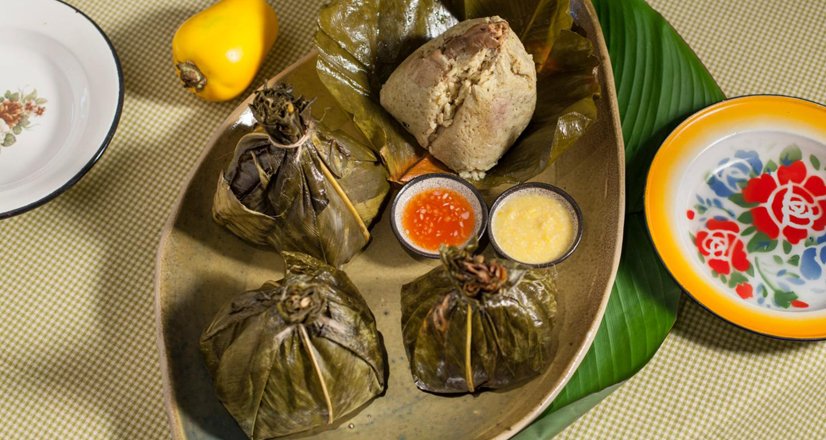Cassava (yuca, medico, tapioca, manioc) is a starchy and tuberous root originating in the Americas.
It is the sixth most important crop in the world, feeding around 8000 million people a year. This hardy vegetable is a globally traded commodity with a deep history, long-withstanding versatility and a hopeful, sustainable future.
Origins and Early Domestication
This perennial shrub originated in the New World somewhere along the southwest border of the Amazon Basin between Southern Brazil and Eastern Bolivia. Its domesticated variety was discovered in the 19th Century and this particular varietal is estimated to be around 8000-10000 years old. It is one of the oldest cultivated crops that spread quickly throughout Central and South America and was eventually dispersed to Asia and Africa.
Cassava has been a significant crop of survival and symbolism for the Indigenous people of the Americas. For the Maukshi tribes of Guyana and Northeastern Brazil, it was a resilient food before, during and after colonisation and appeared in mythology and religious ceremonies. The Mayan civilisation was also responsible for the cultivation of cassava as well as its spread throughout the Americas.
The indigenous peoples learned how to prepare cassava (through trial and error and I expect possibly death), in a way that would reduce the toxicity of this nutritionally dense crop.
Unpeeled Cassava
Two common methods used to prepare cassava were to grate and strain the moisture and then allow it to dry and grind it into flour (farina), the second method is to peel, wash and boil it. The liquid from the cassava, once removed from the starch, can also be used after it has been fermented and then boiled for several days. This is known as tucupi, a unique product used in Brazilian dishes such as pato no tucupi (duck in tucupi) and tacapa (soup).
With a deep root system, the cassava crop is extremely resilient in adverse weather conditions and was integrated with other crops such as maize and beans.
In pre-Colombian times, cassava was an important commodity that was traded throughout the coastal and highland regions with other products cacao and maize. It was also used in various rituals and community gatherings.
The Colombian Exchange, a significant trade route established after Christopher Columbus voyaged to the New World in the late 1400s, moved cassava and other plants, diseases, cultures, and ideas from the Americas to Africa and eventually to the Old World.
Cassava in world cuisines
This diverse and multiple-use crop can be found in an abundance of dishes significant to cuisines around the world.
SOUTH AMERICA
Farofa, is a toasted cassava flour with butter, onions, sometimes bacon and spices. It serves as a side dish to grilled meats and theBraziliann favourite, feijoada, Pao de quejo, a sticky and cheesy snack is also made with cassava flour.
In Peru, cassava is often boiled, then fried until crispy as a side dish or on special occasions, is served in Juane, a type of Amazonian tamale that consists of rice, meat, spices, beans and eggs, blanketed in a bijao leaf and steamed for several hours.
Apart from making crispy cassava fries, Enyucado, a popular Colombian cake is the perfect bake to showcase this wonderful ingredient.
Casabe, is a bread made only from cassava is found in Colombia, Venezuela and the Dominican Republic. The cassava is grated, dried and cooked until it forms together then served as a side dish or as a base for stews and sauces to be piled on top.
In Colombia, cassava is grated and made into a sweet cake called Enyucado
AFRICA
Fufu, a sticky dough in Nigeria consists of fermented cassava only, whereas in other Western African countries it is pounded with plantains and cocoyams. It is
Cassava flour in East Africa is used to thicken stews and the leaves of this crop is often included into stews and soups with coconut milk, vegetables and meat.
ASIA
In Asia, cassava can be seen in many sweet dishes and drinks like bubble tea, tapioca pudding with coconut milk and mango and getuk in Indonesia, a sticky sweet dessert that consists of palm sugar and cassava showered in grated fresh coconut. It is included in Meen curry in India and commonly sliced thinly and fried into crisps that are sprinkled with salt and chilli.
The cassava crop has fed civilisations for centuries and has withstood dramatic climate changes, its resilience has allowed it to be adaptable and to flourish in any continent around the world. Not only is it used in the culinary world, but it’s also industrial applications have made it an extremely sustainable resource, used for packaging, cosmetics and biofuel.

















